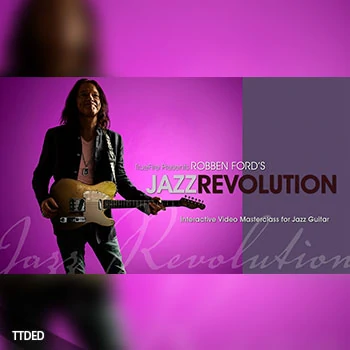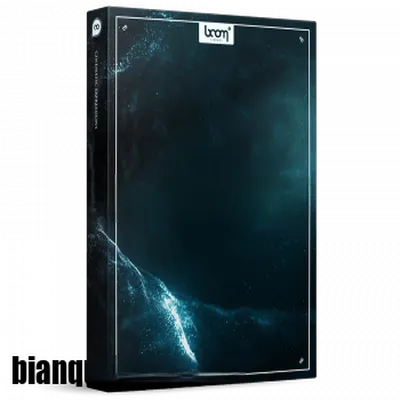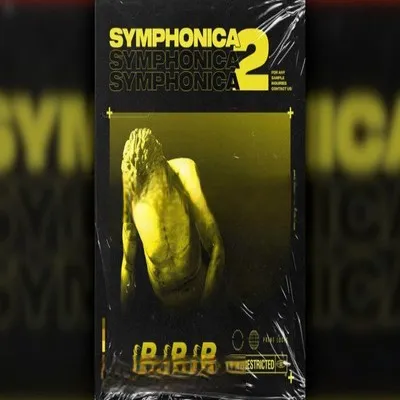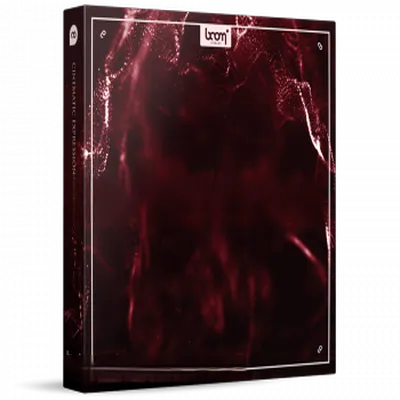 ¥Interactive Video Masterclass for Jazz Guitar
¥Interactive Video Masterclass for Jazz Guitar
Primarily regarded as a bluesman, Robben Ford’s music is influenced and deeply rooted to his love for jazz. Robben has performed and recorded with many jazz artists including most notably Miles Davis, Tom Scott/L.A. Express, the Yellowjackets, Sadao Watanabe, and Dave Grusin.
In this Jazz edition of his TrueFire Revolution series, Robben explores his jazz musicality across 10 performance studies, each focused on a specific comping or soloing approach.
”I’m a self-taught guitarist who began as a blues player, but wanting to expand my musical knowledge, I started investigating what the jazz players were doing. I found that learning chords were the best place for me to begin because even if I wasn’t able to solo over them, I could accompany those who could and gain experience.
Once I had the chords under my belt, I learned scales that allowed me to improvise through them. My first opportunity to play in a jazz setting and with players who were far more evolved than I was, was with Tom Scott and the LA Express, accompanying Joni Mitchell. Soon after, I formed the group Yellowjackets, my first fusion band, and eventually found myself with Miles Davis – my hero in jazz for sure!
In this course, I’ll be showing you my unique way of blending blues and jazz sensibilities in what I think is a fresh approach to jazz composition, harmony and improvisation. We’ll work through 10 different pieces of music, each accentuating a different aspect of writing, comping and soloing.”
Robben will explain and demonstrate all of the key concepts and approaches along the way. You’ll get standard notation and tabs for all of the performance studies. Plus, you’ll be able to use TrueFire’s learning tools to sync the tab and notation to the video lesson. You can also loop or slow down the videos so that you can work with the lessons at your own pace. All of the backing tracks are included to work with on your own as well.
Grab your guitar and let’s dig in with Robben Ford!
Crabshaw: Full Lead Pass – Performance
“Our first track is called “Crabshaw”. Here we’ll work through the full lead guitar part of the track. Up next, we take a look at how to comp along with the track. Then, we’re going to look at a few of the techniques I’m using in-depth. Let’s get started.”
Crabshaw: Comping Sections – Performance
“This playalong shows you some of the comping ideas you could use over the track for “Crabshaw”. We’ll work through a section of the tune, and then start to break down a few of the techniques I’m using in the next segment.”
Open Strings Enhance Bass Lines – Crabshaw: Harmony & Melody
“This song is called “Crabshaw Don’t Care”, which is a reference to a blues that Elvin Bishop recorded with the Paul Butterfield Blues Band, called “Drunk Again”. The song was written in the key of B, something that’s unique to guitar, as it doesn’t fall under your fingers as easily as something like playing in A. Something we’re taking advantage of here is open strings, using them to enhance the bassline. When writing instrumental music, I like to engage the bass player in ways they normally wouldn’t. Instead of just having the bassist hit the root note, we’re bringing them into the composition here with a melodic line played in unison. In this segment, we’ll break down the melody line as well as go through some of the harmonic choices I made with the chords.”
Scales, Triads, Personality – Crabshaw: Improvisation
“With “Crabshaw Don’t Care”, we’re in the key of B7. This gives us a different, brighter sound that’s a little funky too. It’s also great for my voice, so I’m a big fan. Let’s talk a little bit about where my head was at with the improvisation for this tune. With the melody riff, the idea was to inject a little bit of humor into it. That’s something to keep in mind – there should always be an emotion in mind. In jazz and rock ‘n’ roll, we’re often working with one emotion or theme, unlike classical where we can move between different emotions. So, “Crabshaw” is kind of funny. Nothing too overt, just some playful thematics are thrown in to make it light. Let’s go through the lead part, and I’ll break down some of the approaches I took while improvising.”
Hebb Tide: Full Lead Pass – Performance
“Our second track is called “Hebb Tide”. First, we’re going to go through the lead guitar part all the way through, then we’ll check out some comping ideas you can use. After that, we’ll go in-depth with a few concepts that are essential to playing the tune and bringing jazz into your playing. Let’s get to it.”
Hebb Tide: Full Comping Pass – Performance
“Here we have some comping ideas you can use to play along with the track. When you’re ready, head on over to the next segment where we’ll break down some of the harmonic choices I used.”
Freedom is the Joy in Jazz – Hebb Tide: Harmony
“”Hebb Tide” is a series of four chords that are similar to the song “Sunny” by Bobby Hebb. Let’s take a look at the progression, some of the harmonic choices I made working through it and how we can bring in the melody to the chord voicings.”
Always Look for Common Ground – Hebb Tide: Improvisation
“The improvisation on “Hebb Tide” is over four chords, the first three of them taken out of the Eb major scale. The fourth chord is altered that leads our ear back into the I. A cool thing about this particular progression is that there’s a lot of common tones between the chords. When improvising, it’s our job to look for common ground to get from point A to point B. Here we’ll go through some of the cool connection points in the chords, and how you can take advantage of that to put together a solo.”
On That Morning: Full Lead Pass – Performance
“”On That Morning” is our next tune. Here we’re going to work through the full lead guitar part, then we’ll move on to the comping part that accompanies it. To close things out for this song, we’ll break down both the harmonic and improvisation approaches I took for each part. Let’s check it out!”
On That Morning: Comping Sections – Performance
“Here’s some of the comping techniques I’d use for “On That Morning”. I’ll work through a few different approaches here, and then when you’re ready head over to the next segment where we’ll talk about some of the harmonic ideas we’re working with.”
Break the Mode – On That Morning: Harmony & Melody
“This song, “On That Morning”, is an old Gospel tune that I did an arrangement for on my record Bringing It Back Home. This song is in the Aeolian mode – something that I don’t really talk about often is the mode, but I feel like it’s important to know here. All the chords we’re going to play are in the Eb major scale, but we’re beginning on C, the sixth degree of the scale, so therefore its Aeolian.”
An Altered Opportunity Knocks – On That Morning: Improvisation
“”On That Morning” is a minor blues based on the Aeolian mode. Let’s look at how improvising in this mode works over the chords, and some of the techniques that I use to turn this old Gospel tune into something jazzy and new.”
Philly Blues: Full Lead Pass – Performance
“This track is called “Philly Blues”. Here we’re going to go through the full lead part, and in the next segment, we’ll look at some comping approaches to accompany it. Once we






评论0